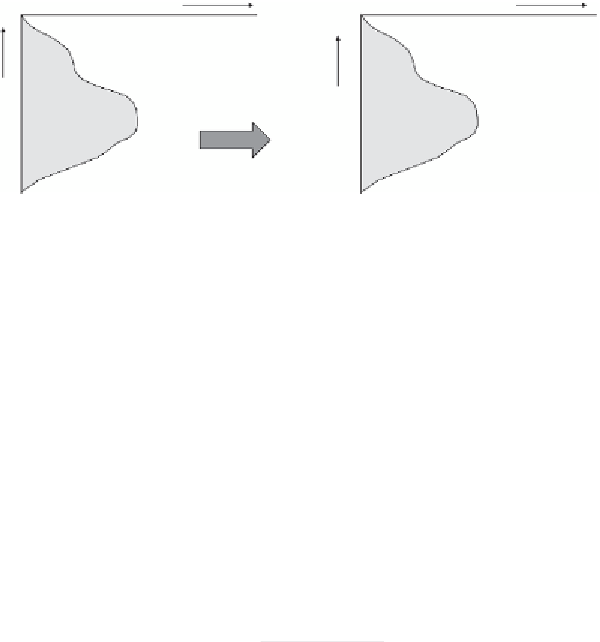Geoscience Reference
In-Depth Information
Root length density
L
root
(cm cm
-3
)
Potential root water extraction
S
p
(d
-1
)
L
root
(
z
)
0
∫
S
p
(
z
)
=
T
p
S
p
∂
z
=
T
p
-D
root
0
L
root
(
z
)
∂
z
-D
root
∫
Figure 6.6
The distribution of the potential root water extraction rate, according to
Eq. (
6.15
), is similar as the distribution of the root length density.
uptake in the past 30 years; we therefore elaborate on this approach (Feddes and
Raats,
2004
).
In the case of optimal soil water conditions, the plant transpiration
T
p
entirely
depends on weather and plant characteristics. At daily intervals we may neglect water
storage differences in the plant; thus the amount of transpiration should be equal to
the amount of soil water extracted in the root zone. How is the extraction rate distrib-
uted over the rooting depth? The most common approach is to make the extraction
rate proportional to the root length density,
L
root
(
z
) (cm cm
-3
). Keeping in mind that
the integrated amount of extraction should be equal to
T
p
, we may derive the potential
root water extraction rate at a certain depth,
S
p
(
z
) (d
-1
):
()
()
∂
Lz
()
=
root
Sz
T
(6.15)
p
−
∫
0
p
Lz
z
root
D
r
With Eq. (
6.15
) the distribution of
S
p
with soil depth is the same as the distribution of
L
root
, which is illustrated in
Figure 6.6
. For practical reasons and because of feedback
mechanisms in the root zone, many studies assume a homogeneous distribution of
root length density with depth. In that case
S
p
simply becomes:
T
D
()
=
p
Sz
(6.16)
p
r
Question 6.2:
Consider a crop with a rooting depth of 80 cm and a potential transpi-
ration rate
T
p
= 8 mm d
-1
. The root density declines linearly with depth. Which poten-
tial root water extraction rate
S
p
do you expect at soil surface (
z
= 0)? And which
S
p
at
z
= -30 cm?
So far we considered root water uptake under optimal soil water conditions. Under
nonoptimal conditions, that is, either too dry or too wet,
S
p
is reduced. As discussed


Search WWH ::

Custom Search